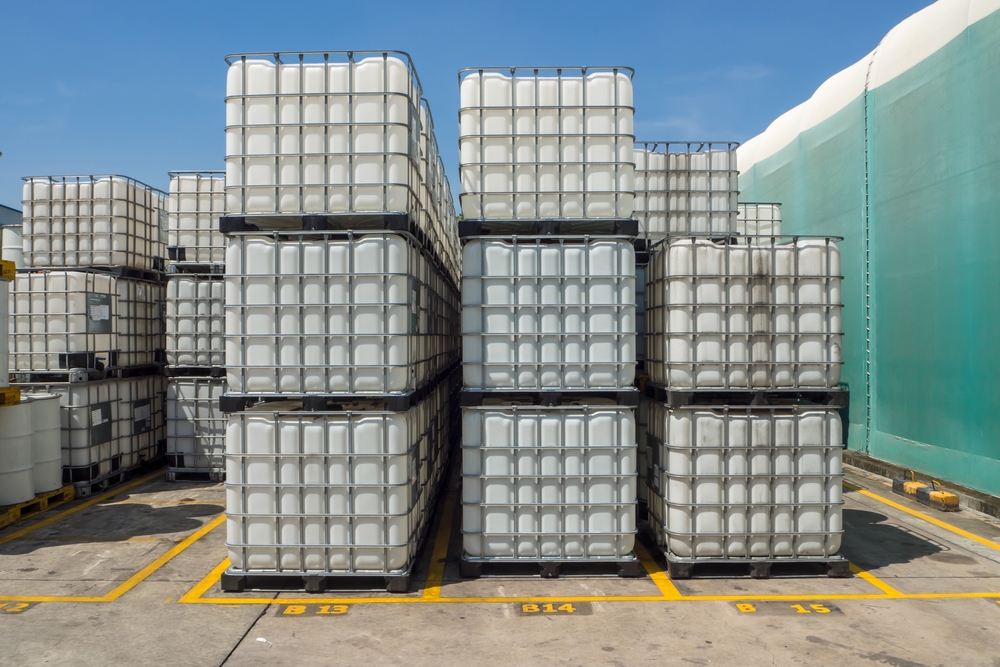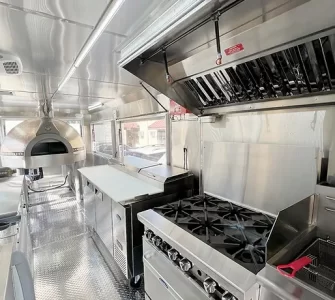
Used white color IBC at outside of building.
It is often said that necessity is the mother of invention. That may be true, but there is something to be said for frustration. More than one invention has come about because someone was frustrated with the limits of currently available options. Intermediate bulk container (IBC) totes are an example of this principal.
IBC totes did not come about directly as a result of someone’s frustration. But their predecessors did. Before there were IBC totes, there were steel shipping crates. Those crates didn’t exist prior to the 1950s. But that changed when a businessman and transportation wizard known as Malcolm McLean decided he had had enough of the slow pace at which freight was transported over long distances.
-
A Better Way to Ship
In the 1930s, McLean and some family members started a trucking company to move goods up and down the U.S. east coast. However, trucks were too slow for his liking. He considered putting trailers on cargo ships and then using tractors for ‘last mile’ delivery. But he realized doing so would be an inefficient use of valuable shipping space. Then he thought of the containers Europeans used to ship their belongings to the U.S.
He knew those individual containers would be impractical for his purposes because they were not standardized. But he still liked the container idea. So he set about inventing a standard shipping container that could be moved easily and transported via multiple modes. In essence, he came up with intermodal transport by inventing crates that could be easily transported on trains, ships, and trucks.
-
Setting Industry Standards
Over the years, McLean’s idea was modified and improved on. New standards were developed for shipping crate size, weight, and dimensions. The rest is history. Today, one of the big reasons manufacturers are able to ship large quantities a freight worldwide is the standardization introduced by McLean’s containerization concept. And that leads us to IBC totes.
In the food service industry, these totes are known as food grade totes. They are essentially the same thing. The substantial difference between a food grade tot and a standard IBC tote, according to CedarStoneIndustry, is the quality of the materials use to make it. Food grade totes must be made with materials that will not contaminate the food inside. They must also be designed in such a way as to prevent contamination during transport.
-
Liquids, Semi-Solids, Etc.
Getting back to the original point, standardized shipping crates were fantastic for moving freight. However, they have one major flaw: they cannot effectively hold liquids, semi-solids, pastes, and other similar substances. If you wanted to use a shipping crate to ship a liquid oversees, you had to put the material in a drum first. Only then can you put the drum in the crate.
By the 1980s, it had become clear that shipping non-solid materials in steel crates was inefficient. Numerous designers began working on shipping vessels that offered all the same standardized benefits as crates but still be able to directly contain liquids, semi-solids, etc. The dream was realized in the early 1990s, when Down Chemical inventor Olivier J. L. D’Hollander patented his IBC tote.
Today, companies in the food service industry have access to food grade totes because one man was frustrated with the slow and cumbersome nature of shipping in the 1930s. His search for something better gave us the steel shipping crate. His crate proved that standardization was possible, paving the way for IBC totes.
So now you know. Sometimes necessity isn’t the mother of invention. Sometimes it is frustration that gets the job done.


















